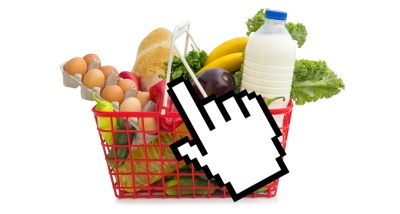
Usability Considerations for Grocery Online Stores
Usability considerations for grocery online stores are essential for attracting and retaining customers. In a competitive market, your store’s usability can make or break the shopping experience. By focusing on key usability aspects, you can ensure a smooth, enjoyable experience for your customers. In this blog post, we’ll explore critical usability considerations for grocery online stores.
The Importance of Usability in Grocery Online Stores
Engaging users with your grocery online store requires excellent usability. Firstly, a user-friendly interface keeps customers satisfied and returning. Secondly, it simplifies the shopping process, making it easier to find and purchase items. Finally, good usability reduces frustration, leading to higher customer retention and increased sales.
1. Intuitive Navigation
Simplified Menus
Your grocery online store needs intuitive navigation. Simplified menus help users find what they need quickly. Use clear, concise categories and subcategories. Ensure the most popular items are easily accessible.
Search Functionality
A robust search functionality is crucial. Implement autocomplete to speed up the search process. Additionally, use filters to help users narrow down their options. Filters can include categories like organic, gluten-free, or on sale.
2. Mobile Optimization
Responsive Design
With the rise of mobile shopping, your grocery online store must be mobile-friendly. A responsive design ensures your store looks great on all devices. Test your site on various screen sizes to ensure consistency.
Mobile-Specific Features
Incorporate mobile-specific features to enhance usability. For instance, enable swipe gestures for easy navigation. Simplify the checkout process with mobile payment options like Apple Pay or Google Wallet.
3. User-Friendly Interface
Clean Layout
A clean layout enhances usability. Avoid clutter and use white space effectively. Highlight important elements, such as the shopping cart and checkout button. This keeps the focus on the products and makes the shopping experience pleasant.
Easy-to-Read Fonts
Use easy-to-read fonts and appropriate font sizes. Ensure text is legible on all devices. Consistent typography helps maintain a professional look and feel.
4. Efficient Checkout Process
Streamlined Steps
A streamlined checkout process is vital. Minimize the number of steps required to complete a purchase. Offer guest checkout to avoid forcing users to create an account.
Multiple Payment Options
Provide multiple payment options to cater to different preferences. Include credit cards, PayPal, and mobile payment methods. Secure payment gateways enhance trust and encourage purchases.
5. Product Information and Images
Detailed Descriptions
Provide detailed product descriptions to inform users. Include information like ingredients, nutritional values, and usage instructions. This helps customers make informed decisions.
High-Quality Images
High-quality images are essential. Use multiple images to show products from different angles. Zoom functionality allows users to see details up close, enhancing their shopping experience.
6. Customer Support
Accessible Help
Accessible customer support improves usability. Offer various support channels, including live chat, email, and phone support. An extensive FAQ section can also help users find quick answers.
Responsive Service
Ensure your customer support is responsive. Quick responses to queries and issues build trust and enhance the user experience. Train support staff to handle common problems efficiently.
7. Personalization and Recommendations
Personalized Suggestions
Personalization keeps users engaged. Offer personalized product recommendations based on browsing history and past purchases. This not only enhances the shopping experience but also increases sales.
Loyalty Programs
Implement loyalty programs to reward repeat customers. Points systems, discounts, and exclusive offers encourage users to return and make more purchases.
8. Security and Privacy
Secure Transactions
Security is paramount for online stores. Use SSL certificates to encrypt transactions. Display trust badges to reassure customers that their information is safe.
Privacy Policies
Clearly state your privacy policies. Inform customers how their data will be used and protected. Transparency builds trust and encourages users to share their information.
9. Regular Updates and Testing
Continuous Improvement
Regular updates and testing are crucial for maintaining usability. Continuously improve your site based on user feedback and analytics. Fix bugs promptly to ensure a smooth experience.
Usability Testing
Conduct usability testing to identify pain points. Use A/B testing to compare different layouts and features. This helps you make informed decisions to enhance usability.
Conclusion
Usability considerations for grocery online stores are vital for success. By focusing on intuitive navigation, mobile optimization, and a user-friendly interface, you can create a satisfying shopping experience. Streamlining the checkout process, providing detailed product information, and offering excellent customer support are also essential. Additionally, personalization, security, and regular updates ensure your store remains competitive and user-friendly.
In summary, prioritize usability to engage users and drive sales in your grocery online store. Implement these strategies to create a seamless, enjoyable shopping experience for your customers. By doing so, you’ll not only retain users but also build a loyal customer base and increase your revenue.
